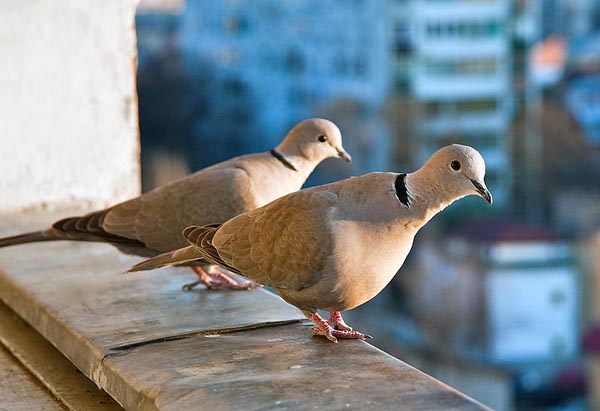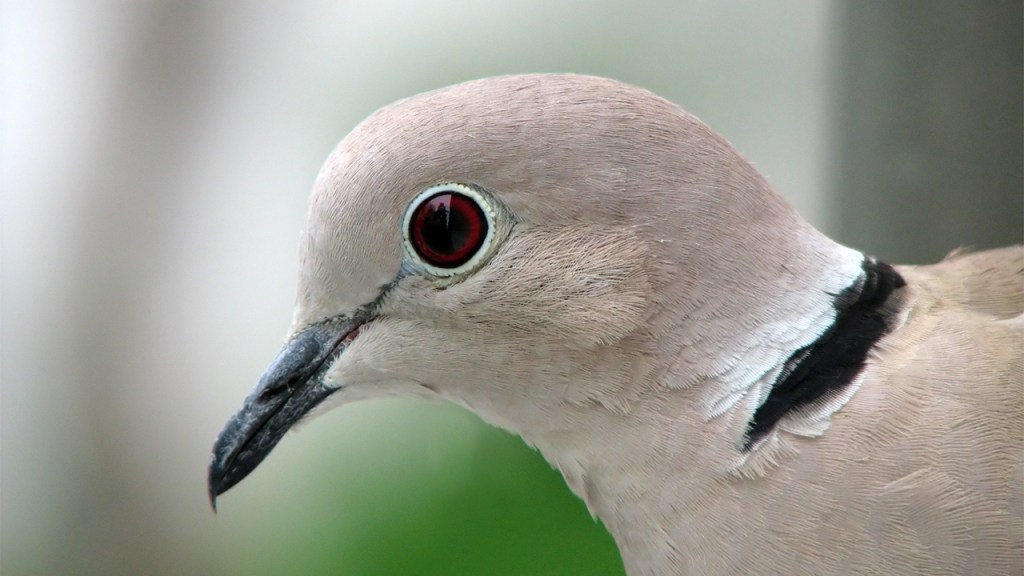The Great Backyard Bird Count (GBBC) — one of the largest citizen science initiatives in the world – annually documents a wide variety of bird population trends.
To my mind, one of the most interesting has been the dramatic spread of the non-native Eurasian collared dove across North America.
The GBBC asks citizen birders to watch an area for at least twenty minutes sometime during a four-day period in mid-February (this year’s count concluded yesterday), and record the birds they see.
Just ten years ago, seeing a Eurasian collared dove would have been a novelty. No more: the doves are now commonly reported by birders in most of the United States.
GBBC data tell the story of this rapid spread.
In the 1970s, the Eurasian collared dove was introduced to the Bahamas. By the early 1980s, the non-native birds made their way to South Florida, where they established populations. Then they began spreading north and west.
Their range appears to have expanded slowly at first. A look at GBBC reports from 1998 show a lot of sightings in Florida, with some birds reported in Texas, Alabama and Arkansas.
By 2001, the doves reached California.
Last year’s bird count results showed the Eurasian collared dove had colonized much of the country. It has not (yet) been reported in New England, but it has reached as far north as Alaska.
The GBBC’s video map dramatically illustrates this expansion.
In my state of Idaho, the doves were first recorded in 2005 by two backyard birders. In subsequent years, the bird was commonly reported in Idaho’s eastern corners. Last year, 132 GBBC participants reported 719 doves throughout the state.
I saw my first Eurasian collared dove in our backyard in 2008 – a banded bird that may have been an escaped pet. Last year, I began seeing the doves hanging around our neighborhood. This year was the first that I noted the species during my own participation in the Great Backyard Bird Count.
What’s going on here? Should conservationists be concerned about this spread?
Unlike some dove species, Eurasian collared doves aren’t migratory. However, they do readily expand into new suitable habitat. In fact, in their native Asia, Eurasian collared doves have been rapidly expanding their range as well – colonizing new countries every year.
The dove is one of those species that adapts well to humanity. The trees, power lines and bird feeders of suburbia provide perfect habitat. The Eurasian collared dove is almost always seen near homes and farms, not unbroken forest or prairie.
Research indicates it is not adversely affecting native mourning doves or other birds. It may simply be filling a new habitat niche created by suburban habitat. But it is still early in the spread.
Could Eurasian collared doves become an invasive threat? That remains to be seen.
Citizen science projects like the GBBC and another citizen initiative, Project FeederWatch, will help scientists continue to track the spread and impacts of the species. It will be interesting to learn what this year’s count found about Eurasian collared doves. If past years are any indication, their populations will likely have grown and spread into new areas of the country.
Have you seen Eurasian collared doves in your area? Have you noted other trends during your backyard bird counts? Let us know what you’re seeing!





I live in So. East Alabama….about 8 miles from the Florida line and just a few years back saw this bird regularly.but haven’t seen any for a while….really miss this beautiful dove…..sounded a little like an owl!
I should have mentioned that this is in Saanich, near Swan Lake, Victoria, BC
3 years ago, I noticed the doves in our neighbourhood. They have stayed ever since then. They visit our yard .. I don’t know where they are nesting, but somewhere very close.
Hello – I am new to bird watching. There are a pair of birds (coming to my bird feeder) that look exactly like the photo above. I live in the Northeastern corner of the state of Alabama. I live in the town of Rainsville, which is in Dekalb County.
The Eurasian Collared Dove has infiltrated our valley and town of Guerneville, California for about the past 3 years now. They are a horrible invasive threat as the song birds and all smaller birds have virtually disappeared from our feeders , trees and plants in our valley. I used to sit in our gardens and count the goldfinches, pheobie’s, junko’s, wren’s, mocking birds,western bluebirds, etc. for hours at a time. What this Eurasian collared dove now brings, aside from the nauseating repetitive “woo hoo hoo” sound, are the larger predator birds. Hawks, ravens, and thousands of crows attempting to raid their nests of eggs. But it appears all in vain, as they are multiplying so fast from year to year. I don’t own a gun, but if I did, I might be doing a little target practice more often than not.
We have two that joined our backyard flock today. In Oregon city, Oregon
April 30, 2018
Just found a breeding nesting in my backyard. We are located in Northwest Alberta, Canada. Peace River Region.
I have a pair in my backyard in South Ogden, Utah. They are quite beautiful and at first I thought they might have been pets that escaped and were lost. A knowledgeable neighbor identified them as Eurasian collared doves. Now I just have to try to keep the neighborhood cats away.
Greetings,
My name is Karyn and I just love my collared. Every year, for a while, I would purchase 4 to 5 birds from a horrible feed store and release on my anniversary. Couple of years they would come back to my yard, the huge pine I released them into died and I never saw them again. I understand visual markings.
But, I have this one little one, for 4 years now living in my house. He, we named Buster Boy, decided he wanted to live here, flew into the garage on an old lawn chair, and has been here ever since. He flew to the garage floor, feed him regular seed,then I saw neck flopped over and looked like death. Picked up bird, crushed cat antibiotics and arnica into him. Now, five years later, he is SHE , I guess I am her mate, and she has laid 10 eggs a yea r, in my kitchen hutch, (not fertile of course, since I’m her mate. )She yells at me all the time for not doing my egg sitting duty, now I get what nagging means. Anyway, so thank you for your wonderful site and just wanted to say hello and others are out there with beautiful situations .
Thanks for letting me tell you about something,
Karyn and Buster Boy
October 5, 2019 – This is my first year with a bird feeder. Wonderful to sit outside with my coffee and be visited with the house sparrows and the doves.
First one I have seen at hour home south of Reno, NV. Our elevation 5400’. Bird was at our feeder with jays and quail.
I had two of them in my fir tree last year…they came back this year but I haven’t seen them for two weeks. Maybe they moved !
Snohomi04/03/18
I have many Eurasian collard doves on my property in Mariposa, Ca, the native doves have been in decline over the past several years with the collard dove taking their place, and for those wondering how they taste, well just fine indeed.
I am in Puerto Vallarta,Mexico . A pair of Eurasian collared doves are feeding and drinking daily on my balcony. I live in northern Wisconsin and have never seen one there.
We have a pair of collared doves in our yard. It looks like they may mate here for the first time..Not my favorite. Do they keep up the racket all year? We have sighted them for about the last eight years. We live near Stanhope,Iowa. They showed up around three weeks ago.
Hi Tom, Thank you for the observation! From what I’ve seen on All About Birds, it sounds like they do not sing as much once they’ve found a mate: https://www.allaboutbirds.org/guide/Eurasian_Collared-Dove/lifehistory#
I just saw one this morning in Ontario, California. 3/26/2018